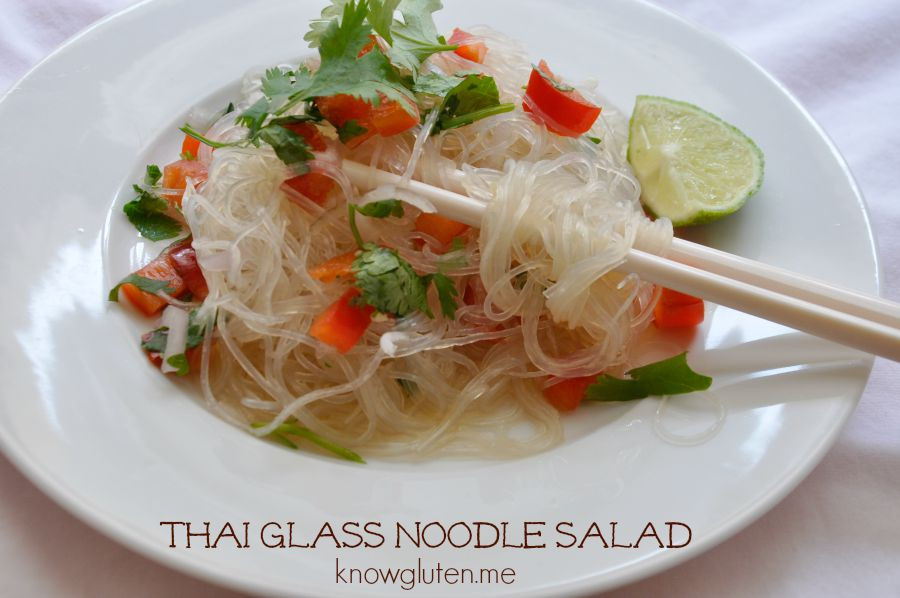
20 Best Ideas Glass Noodles Gluten Free Best Recipes Ideas and Collections
Prepare the noodle sauce by placing all of the ingredients for the sauce in a bowl and whisking it together. Pour the noodles and noodle sauce on top of the veggies and toss together until the noodles are covered with the sauce and have turned a darker color. Lower heat to lowest setting to keep the noodles warm until they are served.

Japchae Korean Glass Noodle Stir Fry (Glutenfree) The Woks of Life Recipe Glass noodles
Delicious Glass Noodles Gluten Free recipes await! Learn how to cook these gluten free noodles at home with our step-by-step guide.
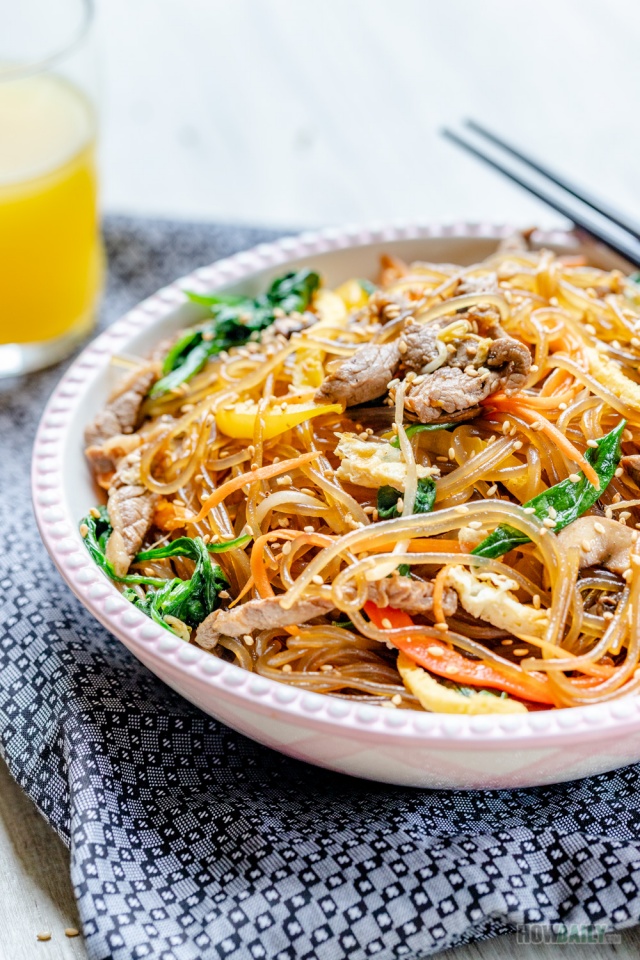
Japchae Recipe Korean Mixed Glass Noodle (Glutenfree)
Use the quick-cooking Japanese noodles in spring rolls, noodle salads, stir-fries, or soups. Harusame (literally "spring rain"), Japanese glass noodles, or cellophane noodles, are thin, transparent, gluten-free noodles made of potato or sweet potato starch. The name originates from the thin, transparent appearance reminiscent of spring showers.
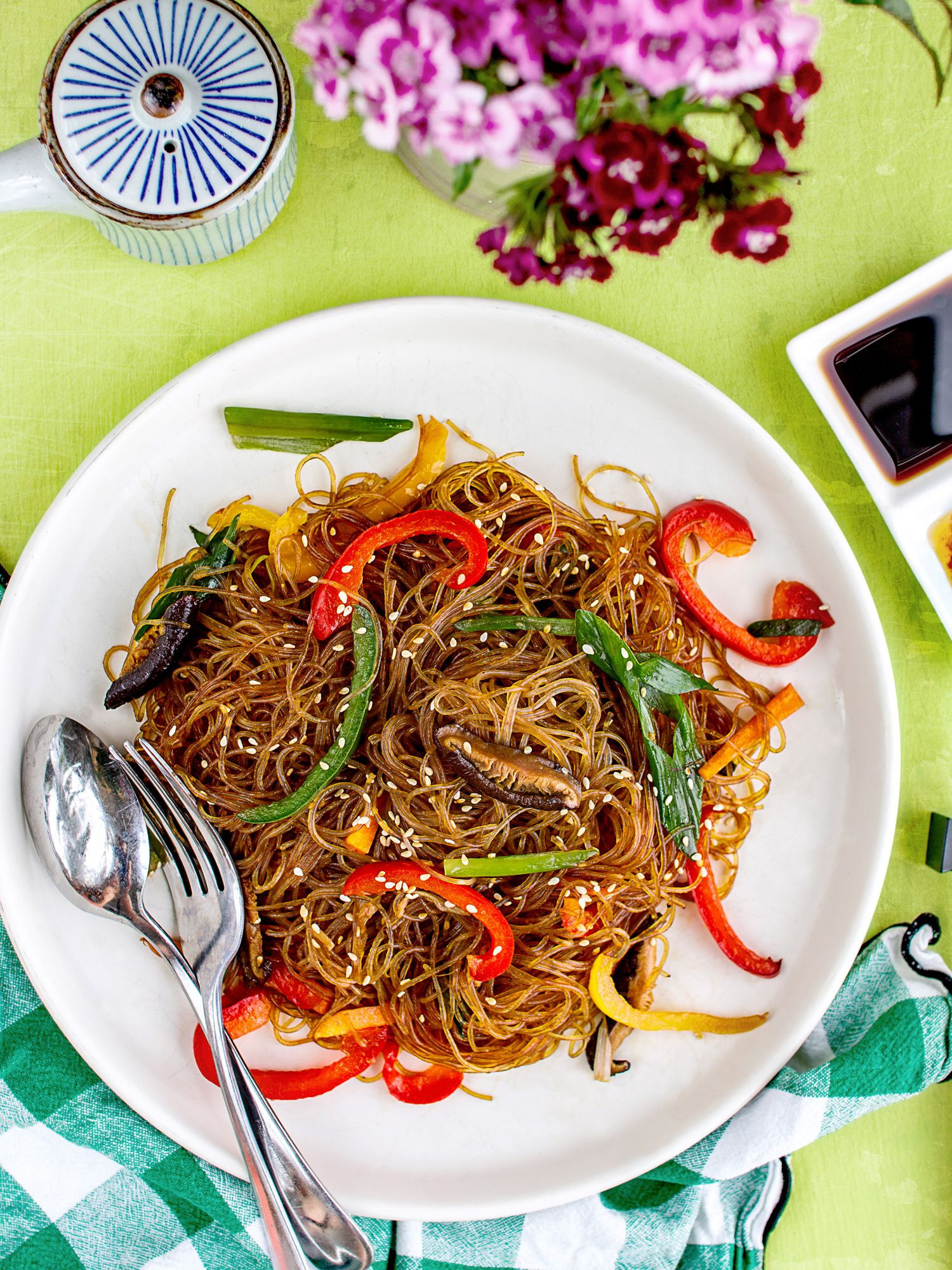
20 Best Ideas Glass Noodles Gluten Free Best Recipes Ideas and Collections
Glass noodles (aka cellophane noodles) are a type of noodle made most commonly in Asia. Sold fresh or dried, they start out white and then turn translucent when they are cooked—so they look kind of like glass! They can be made thick (like fettuccine) or very thin (like angel hair pasta). What are glass noodles made of?
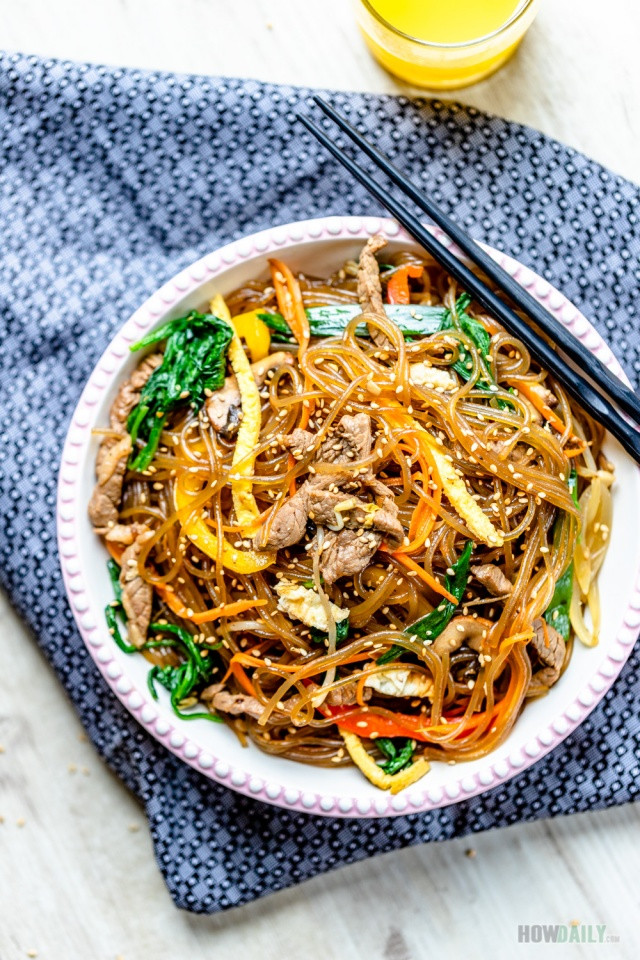
20 Best Ideas Glass Noodles Gluten Free Best Recipes Ideas and Collections
Key Health Benefits of Glass Noodles . They are gluten-free: Glass noodles are gluten-free, which helps to prevent celiac disease.Celiac disease damages the small intestine while intake of any grain foods. They are fat-free: Glass noodles are fat-free, which helps in losing body weight and maintains a healthy weight. It boosts energy: Glass noodles or cellophane noodles may boost instant energy.

Glutenfree Glass Noodles Sempio
Bring a big pot of water to a boil over medium-high heat. In a bowl, mix all the ingredients for the homemade yakisoba sauce: 4 Tbsp Worcestershire sauce, 2 Tbsp ketchup, 1 Tbsp oyster sauce, 1 Tbsp soy sauce, and 1 Tbsp sake. Set aside. Remove the tough core of 6 oz green cabbage and chop into bite-size pieces.

Pin on Healthy eating Celiac and glutenfree
$7 at Amazon Glass noodles are sold dried in packages, and you'll usually find them among the shelves with other Asian noodles, like rice and soba noodles. (You can also easily find the noodles online.) Glass noodles are long and thin and white or tan in color—they won't turn clear until they're cooked.
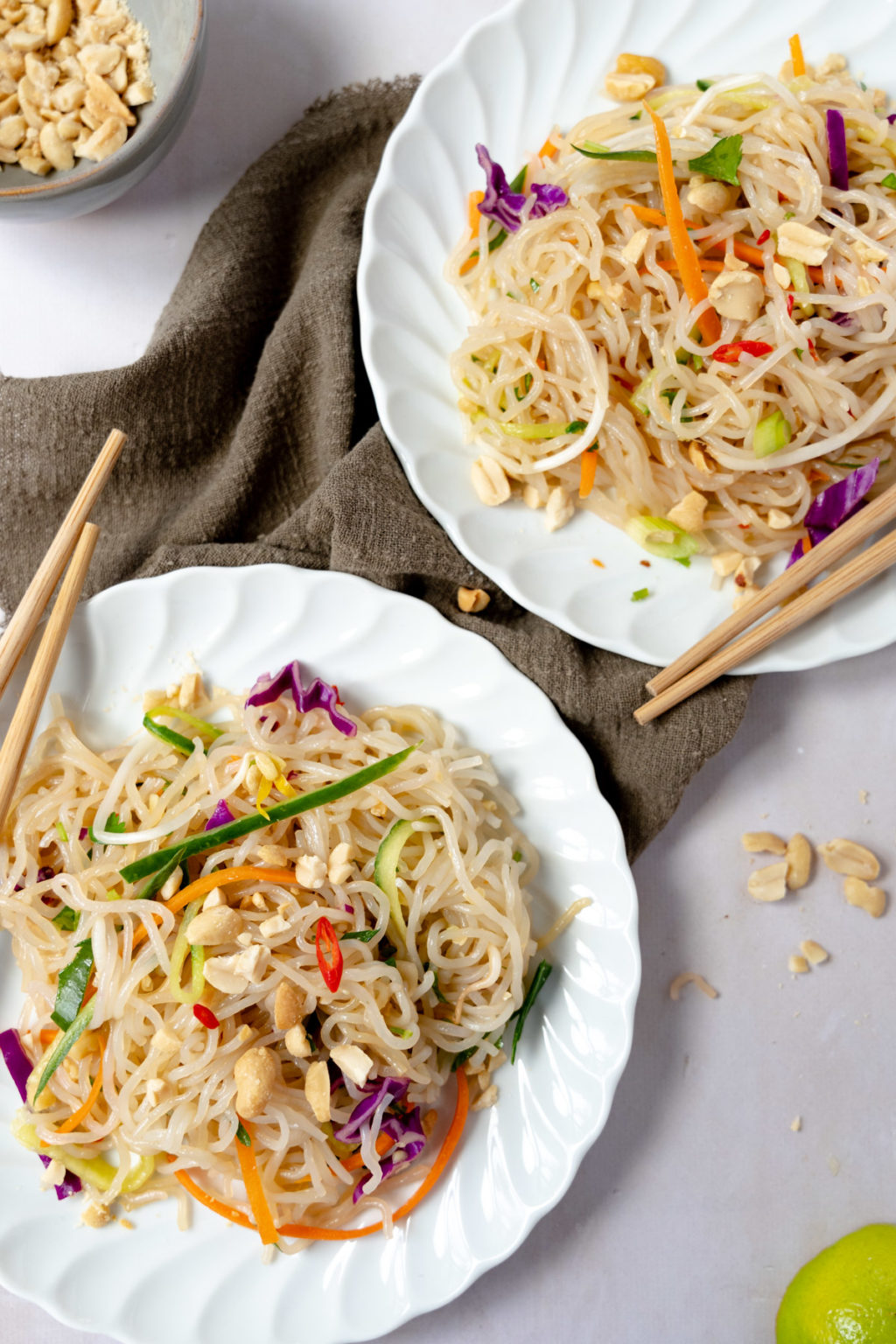
Glass Noodle Salad (Easy Vegan & Gluten Free Salad)
What Is Vermicelli? What Are Glass Noodles? Glass or cellophane noodles are noodles made from mung bean, potato, sweet potato, or tapioca starch and are frequently used in Asian cuisine. They are commonly available dry in packaged bundles and are often imported from China and other Asian countries.
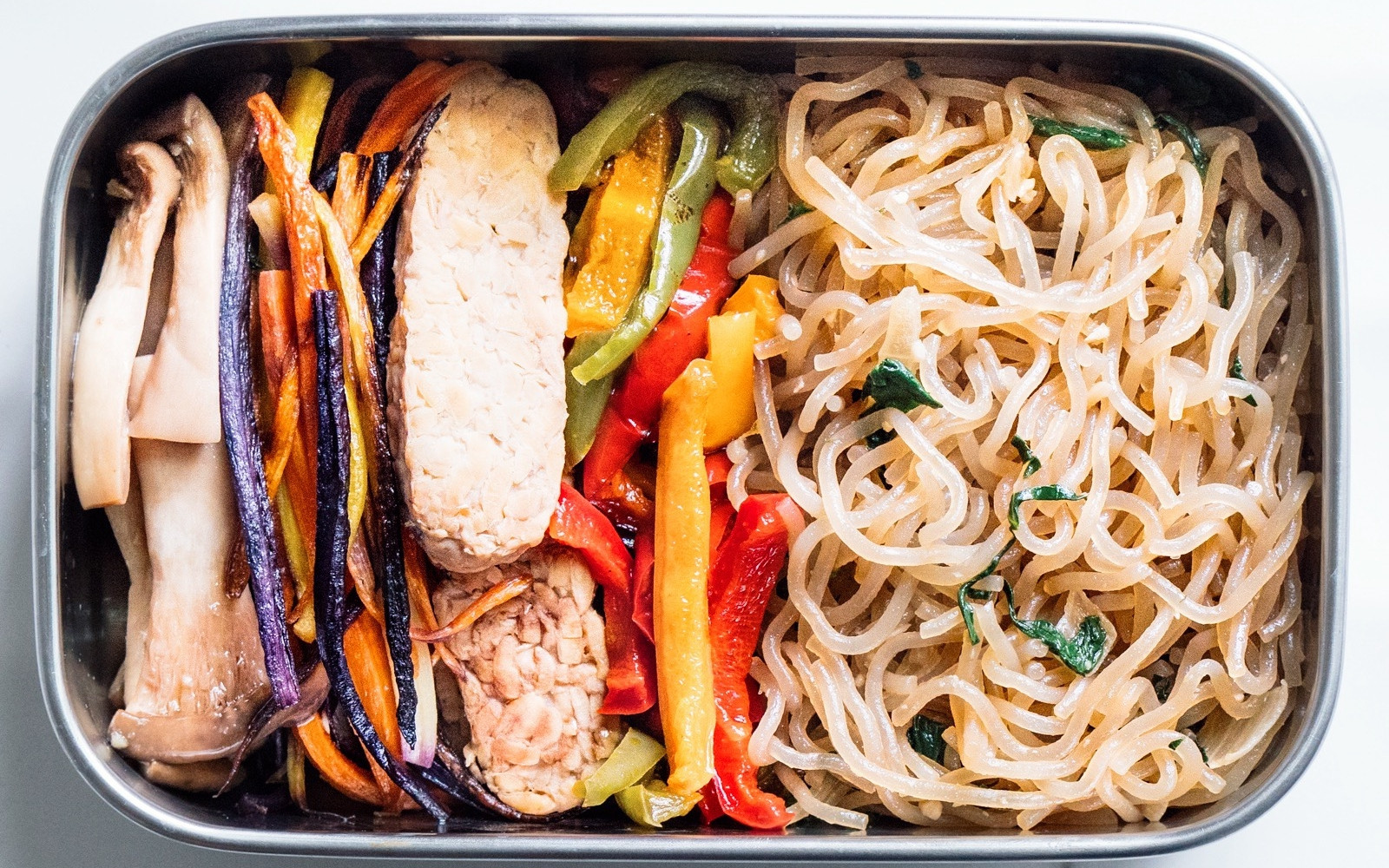
20 Best Ideas Glass Noodles Gluten Free Best Recipes Ideas and Collections
Glass noodles—also referred to as cellophane noodles, bean thread noodles, or fensi—are packaged dry and usually white or a light tan color. Once they are cooked, the noodles become.

Japchae (Korean Glass Noodles) with Tofu Jessica Gavin
Mung bean is the most popular starch used in China. Head over to Korea or Japan, and you'll find sweet potato noodles. Tapioca and potato starch are also used. Like starches, glass noodles go by many names. Some folks know them as cellophane noodles. Others call them bean thread noodles, Chinese vermicelli, or fensi.
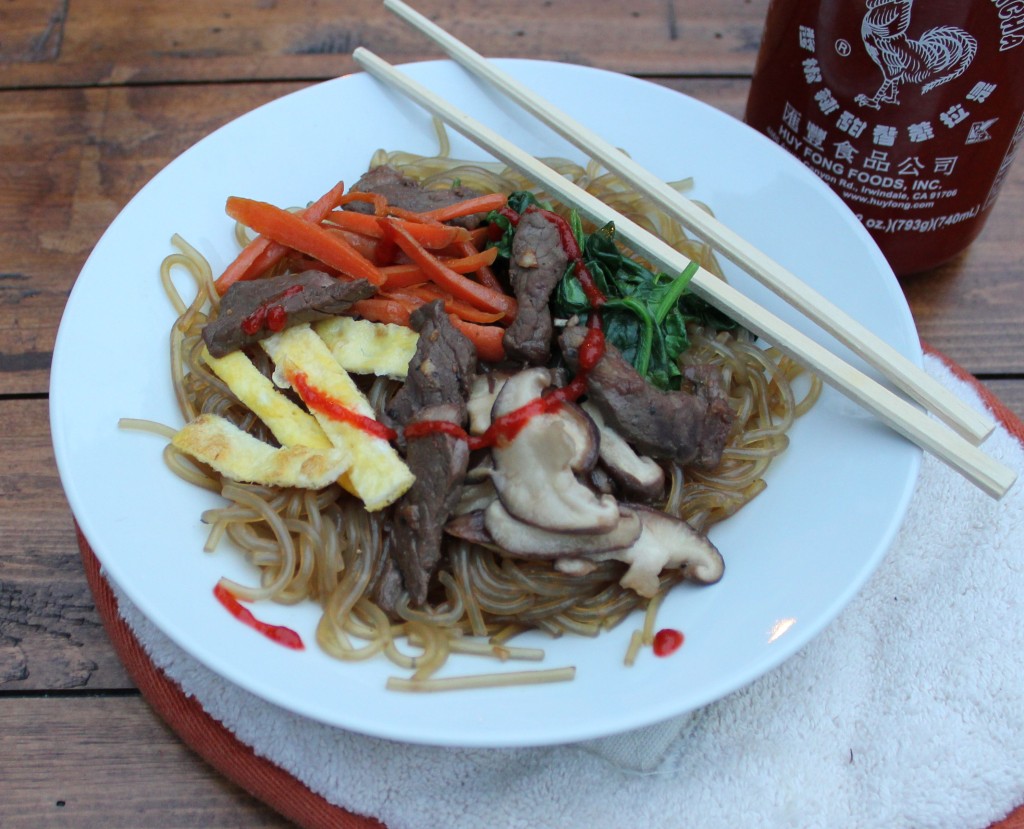
20 Best Ideas Glass Noodles Gluten Free Best Recipes Ideas and Collections
Glass noodles, or cellophane noodles, are a type of noodle made from vegetable starch (usually mung bean) and water. They are very thin and translucent when cooked, hence their name. Glass noodles are often used in Asian dishes, such as soups, stir-fries, and salads.

20 Best Ideas Glass Noodles Gluten Free Best Recipes Ideas and Collections
The answer is yes; glass noodles are naturally gluten-free! Unlike traditional pasta or wheat noodles, glass noodles do not contain wheat flour, the primary gluten source. The primary concern for individuals following a gluten-free diet is identifying ingredients and food products that do not contain gluten.

Glass Noodle Salad In Under 15 Minutes! Let's Brighten Up Glass noodle salad, Glass noodles
What makes them turn transparent? Let's get into it: In uncooked glass noodles, the starch granules are tightly packed together and do not allow light to pass through, which is why raw glass.
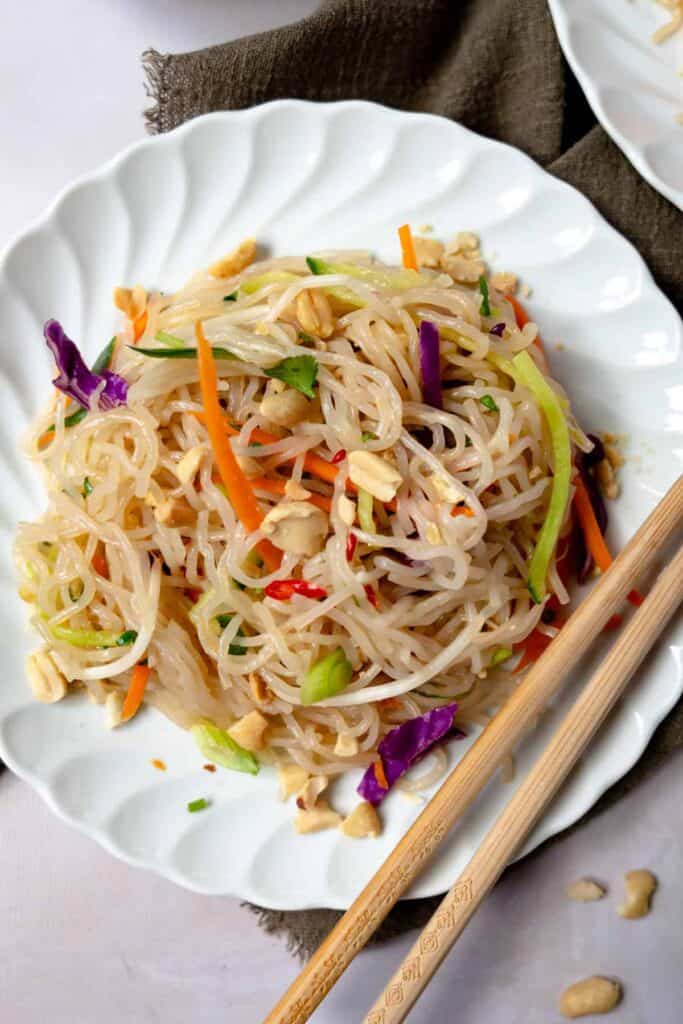
Glass Noodle Salad (Easy Vegan & Gluten Free Salad)
What Are They Made of? Are Glass Noodles Gluten-free? Leave a Comment Find out if glass noodles, or cellophane noodles, are safe for a gluten-free diet, plus which brands to shop for at the store. Note: I am a proud Amazon, Chomps, MunkPack, and Thrive Market affiliate and am happy to recommend their service and products to you.

Easy Sweet Potato (Glass) Noodles GlutenFree
Fast Facts Cook Time: 3 to 5 minutes Other Names: Cellophane noodles, Chinese vermicelli, fensi, bean thread noodles Main Ingredient: Water and starch (mung beans, potatoes, sweet potatoes, tapioca) Substitutes: Rice vermicelli, soba noodles, angel hair pasta What Are Glass Noodles

20 Best Ideas Glass Noodles Gluten Free Best Recipes Ideas and Collections
But what about their gluten content? Are glass noodles gluten-free? The answer is yes! Since the noodles are typically made from sweet potato or mung bean starch, they are gluten-free. However, it's alwys important to check labels as some manufacturers may make other products that include gluten.